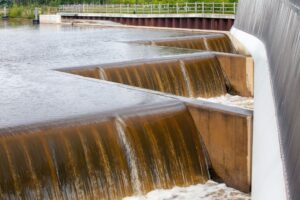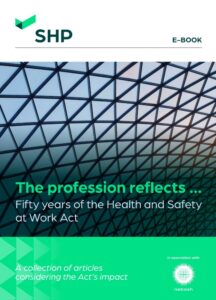WOBO is pleased to provide a range of articles and information through links from SHP

At Hochiki Europe, we are experts in understanding the importance of protecting both the occupants of these buildings and the irreplaceable legacy they embody. Here, we explore the key considerations and best practices for achieving fire safety compliance in educational buildings with historical significance.
Educational institutions hold a special place in our communities. They are not only centres of learning, but also repositories of history, often housed in buildings with architectural heritage that transcends generations.
Broughton Primary School in Cumbria was founded in 1619 by Lady Anne Clifford and is a historic institution offering free primary education. The school building itself dates to the 17th century, featuring a traditional stone-built structure with some potentially timber-framed elements.
Another example would be Winchester College in Hampshire. Founded in 1382 by William of Wykeham, Winchester College is one of the oldest and most prestigious public schools in the UK. The college buildings include a magnificent Gothic chapel dating back to the 14th century and a cloister with architectural elements from various historical periods.
Ensuring fire safety in these buildings is a complex task and becomes a delicate balance between preserving some of the UK’s most irreplaceable historical features whilst meeting modern safety standards that will protect the next generation of bright young minds. It requires skill and a highly specialised approach combined with the very latest in fire safety manufacturing. Follow the link to read more…….

Learning lessons from worker’s weir drowning
On 30 October 2017, Gary Webster drowned in the River Aire, Leeds, West Yorkshire, when the boat he was working from capsized.
Mr Webster and another worker were removing debris from the gates of Knostrop Weir when a substantial flow of water from the weir overwhelmed the boat. The 60-year-old was pulled under water and recovered by a diver 14 minutes later. He died two days later at Leeds General Infirmary. His colleague was able to swim to safety.
In June this year, Webster’s employees, the construction firm BAM Nuttall Ltd were fined £2.34m after pleading guilty to breaching section 2(1) of the Health and Safety at Work etc. Act 1974.
The court heard that the construction firm failed to utilise trained and authorised operatives who could have controlled the flow of the water.
SHP publish e-book on 50 years of the Health and Safety at Work Act
New publication reflecting on the legislation applauds the Act’s influence but asks questions around wellbeing and technology.
Commissioned by SHP, The Profession Reflects… Fifty years of the Health and Safety at Work Act, is a collection of essays and thought pieces with contributions from the profession who were asked to consider what impact the Act has had on themselves and the sector since it gained Royal Ascent in 1974.
Concern around the Act
While most applauded its affect in curtailing deaths and accidents, there was a general concern around how it can incorporate new technology such as AI and big data, and what role it can play in new approaches to wellbeing in the workplace.
In her essay, Erin Shoesmith at Addleshaw Goddard, humanised the Act and addressing it directly offered this advice: “As you know, the pace of change is unmatched by any regulation and until any new legislation is passed, you will need to be the voice of reason to ensure that any exposure to safety risks from the use of AI systems, are mitigated to the lowest level possible.”

Court upholds WM Morrisons Ltd conviction after adjustments not made for vulnerable worker
In this month’s partnership article, Andrew Sanderson and Annabel Twose of Fieldfisher’s Health & Safety practice group reflect on the death of supermarket worker, Matthew Gunn, and the importance of making reasonable workplace adjustments for the wellbeing of workers.
New Zealand looks beyond road cones in safety reformation
Government plans to reform health and safety law and regulations amidst what it calls over-zealous use of ‘senseless’ road cones.
In a press release announcing the consultation, the New Zealand government’s Workplace Relations and Safety Minister Brooke van Velden said the country’s “safety culture can be summed up by the sea of orange road cones that have taken over the country.
“From Santa parades to property development, you can’t get a lot done without having to set up a barricade of cones.
“While they may improve health and safety in some places, in other situations their prevalence just doesn’t make any sense.”
The review aims to establish if ‘health and safety requirements are too strict, or too ambiguous to comply with‘, and to find out if ‘Difficulties caused by the overlap between work health and safety legislation and other requirements‘.

Does a new Government spell a new dawn for UK health and safety?
What can we expect from the new Labour Government when it comes to health and safety? Emma Evans at Bexley Beaumont takes a look at the short-and long-term possibilities.
The recent election saw Labour acquired a landslide majority with 63% of seats in the House of Commons. The King’s Speech that followed made various statements to suggest what the renewed focus and priorities will be for the newly formed Government. The below shares legal insight and opinion on what we may expect in health and safety for 2024 and beyond. Follow the link to learn more…..

